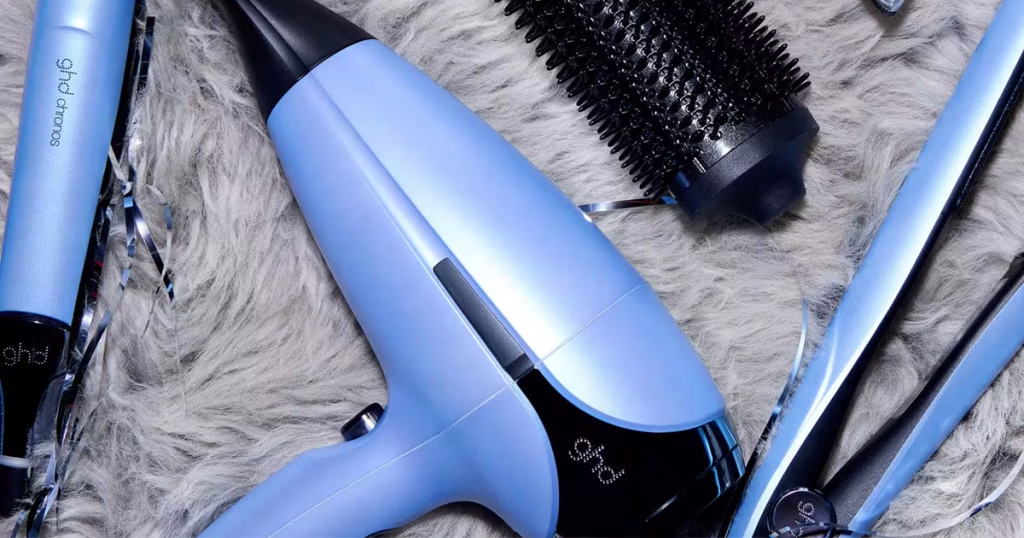The Amazon Eero Pro 6E is a mixed bag as a standalone mesh router.
Amazon Eero Pro 6E mesh router review
We may earn money when you click our links.
I haven’t had a chance to play with an Amazon Eero product in the last four years. Back then, I was impressed by the design, coverage and ease-of-use of the original Amazon Eero even if I was put off by the price. Fast-forward to more recent times, and there are several Eero products to choose from, ranging from the comparatively reasonably priced Eero 6 and the pricier Eero 6 Plus to the focus of this review, the Amazon Eero Pro 6E.
I was sent a single Eero Pro 6E unit to review, effectively relegating it to a router with mesh WiFi system potential, and was left with mixed impressions.

How much does the Amazon Eero Pro 6E cost in Australia?

No matter the configuration, the Amazon Eero Pro 6E isn’t cheap. As a standalone router or for a single-unit expansion, you’re looking at $450. For context, investing about $50 more gets you a Eero 6 three-pack system. For $50 less, you can get a TP-Link DECO X50 three-pack or the D-Link M15 three-pack for even cheaper.
There seemingly isn’t a two-pack option in Australia (though there is in the US), which means you’re up for a $949.99 investment for a three-unit Pro 6E mesh WiFi system. That’s noticeably cheaper per individual unit, but still a steep price to pay for whole-home mesh WiFi.
Amazon Eero Pro 6E mesh router setup and configuration








































The great thing about mesh WiFi systems is that they’re built to be incredibly user-friendly, and the Amazon Eero Pro 6E is no exception to this rule. Admittedly, I did have a false start during initial setup that meant I had to power cycle my modem multiple times, but even with that hiccup it was only around 12 minutes to get online. The only disclaimer is there are only two Ethernet ports. They’ll automatically detect whether it’s for LAN or WAN traffic and one of them is 2.5Gb, which is great, but that meant I only had one free LAN port and was forced to run my wired devices via a network switch.
Download the Eero companion app before disconnecting your old gear to make initial setup easier, and take advantage of guided setup, including neat touches like feedback on your Eero placement. I also appreciated the prompt to use my old WiFi network username and password to streamline the process of automatically transitioning my old WiFi devices from the old network to the new one.
After that, there was a prompt to install a firmware update. I’d advise most people select the ‘Maybe later’ option and let it do its thing automatically in the wee hours of the morning. I do my testing with the latest available firmware, though, so it was an impatient six-minute wait for the firmware update to install, without the benefit of an ETA or a progress meter. Admittedly, that’s not as bad as the up-to-15-minute estimate.
I did appreciate that the Eero app automatically ran a speed test to give me an idea of the max download and upload speeds I should expect. What I appreciated less is being tied to the companion app and not also having the option of a web portal. Though they are improving, in my experience companion apps are a great way for basic changes while a browser-accessed web portal is the better way to tweak more complex settings. The lack of a web portal is disappointing, particularly given where some of the app settings are tucked away.
Amazon is the largest online retailer in the world. It also provides cloud services and consumer products, including the Amazon Eero mesh WiFi system line and Firestick streaming devices.
Amazon Eero Pro 6E mesh router speed tests

I typically check networking gear to ensure that band steering is enabled by default. This feature is built to automatically switch between 2.4GHz and 5GHz wireless bands, which is a user-friendly inclusion assuming it does what it’s supposed to. Band steering isn’t just enabled by default for the Amazon Eero Pro 6E, it’s something that can’t be disabled. In fairness, that’s not the biggest problem (again, if it works) but it does potentially cause issues with older 2.4GHz devices (like the Nvidia Shield TV Pro). It’s also worth flagging that the Pro 6E has a 6GHz band for compatible devices, but the Eero doesn’t appropriately designate it, leaving me with two WiFi networks that have identical names. While it wasn’t perfect, I did appreciate that the TP-Link GE800 put a ‘_6GHz’ identifier on the 6GHz band.
All of my router internet speed tests are conducted with an Exetel NBN 100/20 FTTC apartment connection, using Ethernet for the first test then a Google Pixel 7 Pro for the WiFi tests (via WiFi 6). All of the tests below were done in the evening. Lower numbers are best for latency (measured in milliseconds), while larger numbers are better for download and upload speeds (both measured in megabits-per-second). Use the top line of results in the tables as an idea of best-case speeds at that time of day, then every line below as comparative.
Now to the tests. For comparison, I start my speed tests with the Synology RT6600ax router that I use when I’m not reviewing networking gear.
As soon as those tests are done, I switched over to the Eero 6E.
Most of the test results for the Pro 6E are decent but there are a couple of notable outliers. The study performance in particular is woeful, and the bathroom results aren’t anything to write home about. Bear in mind that the bathroom had regular WiFi dropouts during later sit-down internet tests—across both identically named SSIDs—and those slow study scores were consistent when tested at different days and times.
There is a disclaimer here, though. I was predominantly conducting tests on whichever network the Eero automatically put me on. Further testing suggests that the WiFi network with ‘Available via eero’ additional text is the 6GHz band with worse range (albeit higher speeds in theory). Forcing my relevant wireless devices to connect via the other WiFi network sometimes led to better results… when those devices weren’t disconnecting in the bathroom and study areas.
As it stands with that initial round of speed tests, the results are okay without being overly impressive. Consistent latency at different ranges is impressive, as are the garage speeds given the RT6600ax drops out downstairs. The farther away you move, though, the less a single Pro 6E maintains download and upload speeds, as seen in the fence and across-road results at the bottom of the table.
Amazon Eero Pro 6E mesh router performance and versatility

On the versatility front, the Amazon Eero Pro 6E is built to interlink with more than one unit. Apparently you can keep adding an unlimited number of units, but that close-to-$1K investment per three-pack looms large. Technically, it should create more reliable WiFi coverage that allows more places in the home to tap into future-proofed perks like speedy-but-short-range 6GHz. That said, 6GHz is really only useful for large file transfers between devices on your home network, and won’t really shine until Australian internet speeds are faster (like NBN 2000).
In terms of everyday performance, there were no issues with basic streaming on multiple devices, video calls, online gaming and voice calls. I added the “basic” qualifier above because there is a catch when it comes to Quality of Service (QoS). QoS is a great feature which, at its best, automatically controls the available internet bandwidth and divvies it up based on priority tasks like online gaming, streaming and video calls. It effectively allows people to download files at ‘full’ speed without having to set manual bandwidth limits while preserving the quality of those other online tasks.
By default, the Pro 6E doesn’t have QoS enabled, and you have to dig into the Eero Labs beta features to enable it. Given QoS is pretty standard across devices these days, it’s odd to have it tucked away as a beta feature. The more frustrating app bug was one that’s reportedly been persistent for months when I encountered it.
Admittedly, it’s a bit unique, but whenever I get a new networking device to test, I check how easy it is to change the IP address for the device. While most people likely won’t use this feature, it’s handy for those who have devices on fixed IP addresses, like my Synology DS920+ NAS and my main desktop PC. Switching IP addresses on the Pro 6E is a nightmare and not just because the setting is tucked away.
When I found the setting, it would say it was rebooting to take effect. Except nothing happened. My internet sleuthing identified a bug, and the workaround is to use one of the recommended IP addresses, allow the device to reboot, then apply your own manual settings (all without an error message). Unlike other devices, the IP range must start with ‘.0’ for the first option, whereas other devices are less confusing and just ask you what IP address you’d like for the router, modem-router or mesh WiFi system.
Is the Amazon Eero Pro 6E mesh router worth buying?

The Amazon Eero Pro 6E is a tough sell. As a standalone router, it’s too expensive to be worthwhile, and the full mesh WiFi system experience costs close to $1K. That’s not the steepest mesh investment if the Pro 6E worked without disclaimers, but there are a few too many issues that get in the way of what mesh WiFi systems are supposed to be: set-and-forget devices that intuitively work in the background and maintain a seamless online experience. It doesn’t help that I’d just finished reviewing the third-of-the-cost TP-Link HX510, which had a much better user overall internet experience.
How we review routers
We test our routers in ways that are meaningful to everyday users. That starts with looking at where the price of a router falls in comparison to its peers, relative to the features it offers. Then comes the setup, evaluated in terms of hardware installation and initial configuration to get connected.
We like a router that’s easy to install, simple to configure and one that’s easy to tinker with for users who like to personalise settings inside a router’s operating system. Ultimately, though, a router has to offer a speedy and reliable network—mainly for preserving internet speeds but also for local transfers—which is why we pay close attention to the results of our speed tests.
From there, we test a router as an everyday device. While high-end, future-proofed bells and whistles are great, we like routers that reliably work in the background to make it easy to browse the web, play games, share files locally and, ideally, offer wide-reaching WiFi networks.
Amazon Eero Pro 6E frequently asked questions
Related Articles






